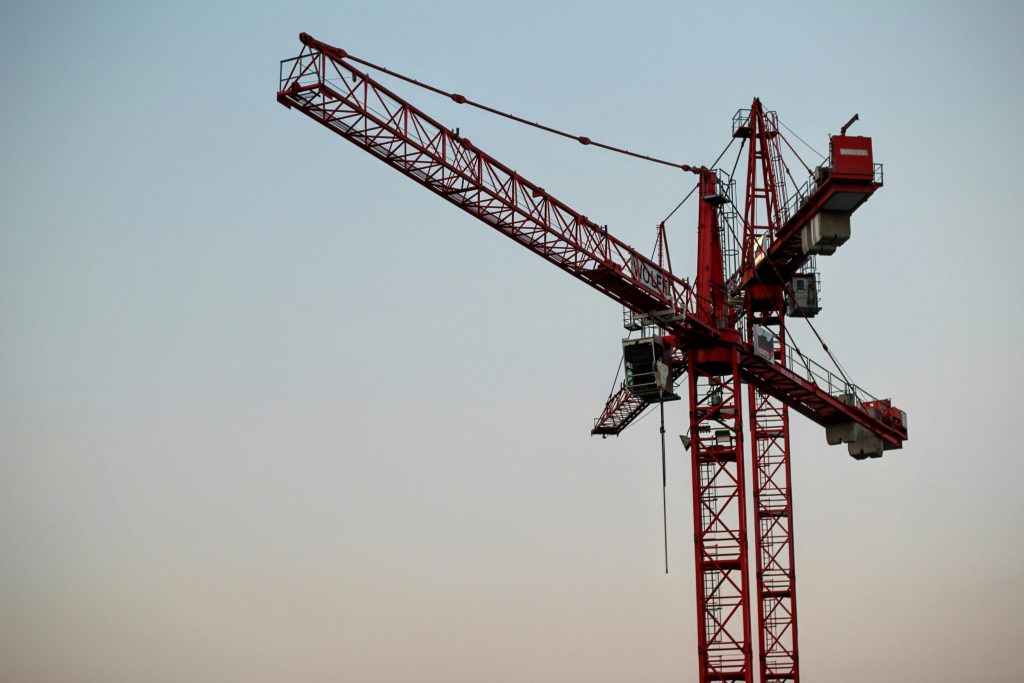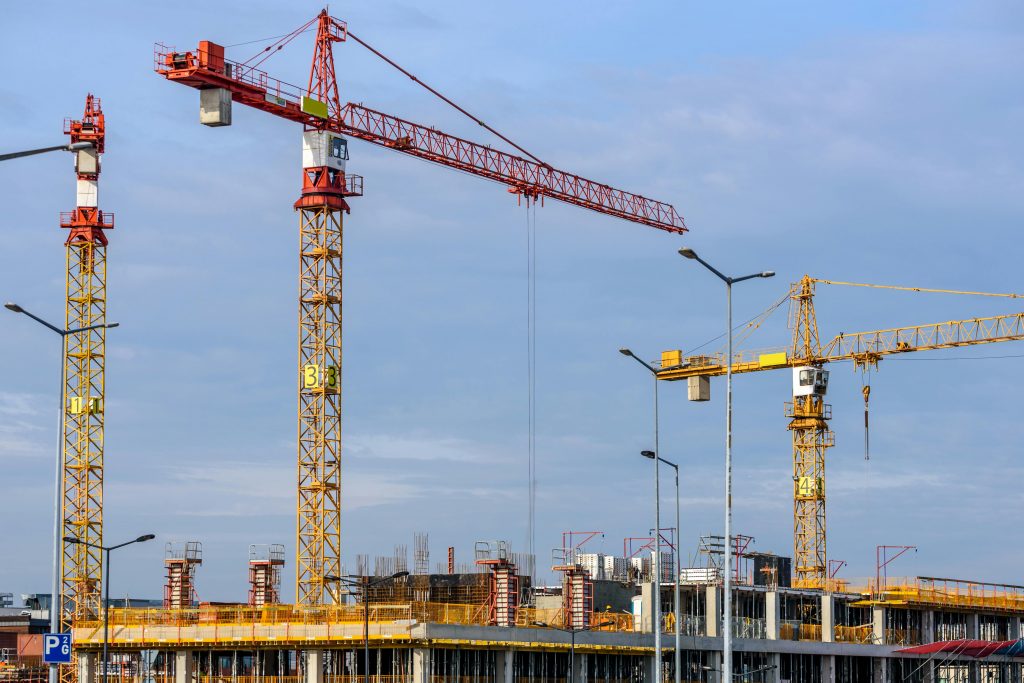- Heavy machinery is pivotal in modern construction, enhancing efficiency and ensuring safety.
- The construction industry is evolving with a focus on environmental sustainability and waste reduction.
- Innovations in machinery aim to meet new environmental standards without compromising on performance.
- The future of construction relies on continuing advances in machinery for a sustainable and safer built environment.
- Understanding the capabilities of construction machinery is essential for tackling future construction challenges.
The sight of construction sites, the pulse of urban development, is a symphony of industry and innovation. Yet, among the architects, engineers, and project managers stands a silent protagonist whose contribution often goes unnoticed by the onlookers. Heavy machinery forms the backbone of modern construction, not just as an enabler but as the harbinger of a new era for the industry. The clamor of cranes and the earth-shaking rumble of bulldozers tell the story of an industrial revolution that hinges on the colossal might of these mechanical giants.
In this detailed exploration, we’ll excavate the true depth of heavy machinery’s role in construction, from its historical precedence to its technological future – highlighting how these monsters of industry have become synonymous with efficiency, safety, and the very skyline of progress we admire.
The Backbone of Modern Construction Sites
Before we can appreciate the towering impact of these machines, we must dig into their origins—where the seeds of modern construction practices were sown. Early iterations of construction equipment date back to the ancient Greeks, who are credited with creating the crane. It wasn’t until the Industrial Revolution that we began to see heavy machinery in a form that even remotely resembles what we use today.
The 20th century marked a revolution in the construction industry, developing more powerful and specialized equipment. Bulldozers and excavators became quintessential to construction, able to flatten the ground and move the earth with unprecedented efficiency. And towering cranes, able to lift massive loads to dizzying heights, changed the game for urban development.
Excavators: The Swiss Army Knife of Construction

Few machinery can match the excavator in terms of adaptability. Whether it’s demolition work that requires a precise, controlled hand or earthmoving that demands brute strength, the excavator is the quintessential multi-tool. This machine’s versatility across many tasks within one construction project makes it indispensable.
Excavators come in various forms, each tailored for specific uses. Wheel excavators are ideal for urban renewal projects due to their mobility, while crawler excavators offer superior stability on rough terrains. No matter the type, excavators remain the surgical instruments in the orchestra of construction, delicately carving out space for the operatic structures we admire.
Bulldozers: Carrying the Weight of the Earth
Bulldozers exemplify the mantra of ‘heavy lifting,’ albeit in the horizontal sense. These machines are untiring workers, known for their ability to clear land, grade terrain, and push materials with a strength that belies their relative simplicity in design.
Operating on tracks to distribute weight and reduce ground pressure, bulldozers can efficiently and safely tackle a wide range of tasks. Their role is foundational in the literal and metaphorical sense as they prepare the groundwork for construction. In a real sense, nothing could commence without the clearing and grading work these mammoths facilitate.
Cranes: Reaching New Heights

If bulldozers and excavators lay the groundwork, cranes are the hands that build the sky. The diverse array of cranes, from tower cranes that dominate the urban horizon to mobile cranes that bring versatility to the construction floor, play a crucial role in safely lifting, placing, and moving the materials and structures that compose a building.
In high-rise construction, cranes are as integral as the concrete and steel. They are the vital organs that ensure the safe transportation of heavy building materials to sometimes staggering heights. The existence of skyscrapers is a testament to the efficiency and precision that cranes bring to the construction process.
Loaders: The Movers and Shakers
Where excavators and bulldozers excel in specialization, loaders thrive in versatility. These machines exemplify efficient motion from wheel loaders that nimbly maneuver around sites to backhoe loaders that dig and load easily. Their main goal is to transport bulk, whether debris, gravel or the earth we walk upon.
Loaders often serve as the intermediary step, hauling materials to where they’re needed on the construction site. Their role in keeping the project running smoothly cannot be understated. In a single day, a well-operated loader can do the work of several laborers, thereby increasing the project’s pace and lowering labor costs.
Specialized Aerial Equipment: On High Ground
For tasks that extend into the air without the need for heavy lifting, specialized aerial equipment steps in as the construction industry’s methodical wings. Equipment such as scissor lifts and cherry pickers provide safe, efficient access to elevated work areas, allowing workers to perform tasks with precision and security. Another specialized equipment are boom trucks.
Boom trucks occupy a unique space in construction machinery. With their telescopic arms and basket cranes, they facilitate high-altitude work. Essential for tasks that require reaching up rather than out, boom trucks are often seen in the midst of complex installations and repair jobs, adding a layer of access that would be challenging, if not impossible, for traditional cranes to achieve.
A boom truck creates a bridge between the ground and the skies. They form the backbone of maintenance work on high structures, and their role is becoming increasingly prominent in urban development where space is a premium and vertical construction a necessity.
Enhancing Efficiency and Safety
In the high-stakes world of construction, efficiency and safety are non-negotiable. Heavy machinery has played a pivotal role in enhancing both. Technological innovations in machinery design have focused on streamlining processes, reducing waste, and increasing accuracy. At the same time, safety measures have been embedded into the very fabric of heavy equipment, ensuring that the risk associated with mammoth tasks is inherently minimized.
The integration of automation, GPS tracking systems, and sensors has revolutionized how we operate heavy machines. These advancements have led to better risk assessment and management, reducing the number of accidents and increasing overall site safety.
Technological Advancements in Heavy Machinery
Modernizing heavy machinery isn’t just about size and strength but smarts. Telematics systems allow for remote monitoring of equipment conditions and real-time diagnostics, ensuring that maintenance is predictive rather than reactive. Advancements in material technologies have reduced these beasts’ ecological footprints, making them more environmentally friendly than their predecessors.
Perhaps the most groundbreaking advancement has been the integration of robotics and artificial intelligence. This has taken precision and control to a whole new level, achieving outcomes that were once the stuff of science fiction. The symbiosis of technology and construction machinery is a beacon of the industry’s sustainable future.
Safety Measures and Training
The sophistication of modern machinery necessitates a parallel dedication to safety measures and training. Construction sites are hazardous environments, and rigorous preparation is the only way to mitigate risk. In addition to adhering to safety guidelines and regulations, proactive training and intensive certification for operators are crucial.
The operator’s role extends beyond operating the machine; they are the first line of defense against accidents and malfunctions. Therefore, investing in their expertise and continuous training is an investment in the site’s overall safety and success. Regular training refreshers, equipment-specific courses, and simulator-based exercises contribute to an operator’s preparedness.
Environmental Considerations
With the global spotlight on sustainability, the construction industry is under increasing pressure to be more environmentally conscious. Heavy machinery manufacturers have responded by implementing technological solutions that reduce emissions and fuel consumption. Innovations in engine design, fuel types, and exhaust treatment systems are just a few examples of the industry actively pursuing greener alternatives.
Furthermore, the focus on recycling and reusing on construction sites has brought attention to the life cycle of materials. Heavy machinery’s role in this aspect is significant, from separating and processing waste materials to transporting and repurposing them. With a growing emphasis on reducing waste and conserving resources, construction machinery continues to adapt to these new environmental expectations.
Conclusion: The Unstoppable March of Heavy Machinery
The churning gears, oscillating thumps, and towering cranes that overshadow us are manifestations of modern construction, an industry propelled by the colossal might of heavy machinery. Far from being mere tools, these machines are the architects of efficiency, the sentinels of safety, and the flag bearers of progress.
The role of heavy machinery in modern construction is not simply to cut, lift, or push. It is to redefine what we are capable of, push the envelope of innovation, and provide a safe and sustainable foundation for the structures that shape our world. The industry’s responsibility now lies with continuing this advancement legacy and ensuring that today’s machinery is a testament to a brighter, bolder tomorrow.
The more we understand and appreciate the machinery that powers our modern marvels, the better equipped we are to handle the challenges and opportunities of tomorrow. It’s not just a matter of building – it’s about building better, building safe, and building with the environment in mind. This is the indomitable spirit of construction, carried on the iron shoulders of machines that stand as tall as the dreams they help realize.


